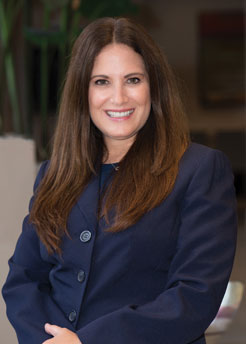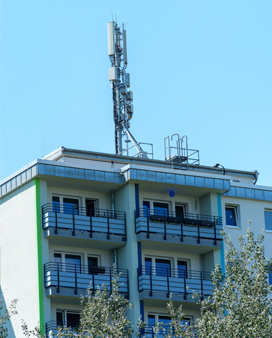
FCAP Community
Published January 2024
Florida Community Association Professionals’ (FCAP) training is offered on two levels. Level one consists of courses meeting Florida’s continuing education requirements for CAMs, and level two is the Florida Advanced CAM Studies (FACS) course. For further information about the more than 38 online continuing education classes available or to pursue the Certified Florida Community Association Manager (CFCAM) designation, please visit https://www.fcapgroup.com/managers-2/.
Because You Asked
By Betsy Barbieux, CAM, CFCAM, CMCA
Betsy,
Can you tell me if there is a process for a new home buyer who moves into an association? Does this apply to all communities? Does the law allow board discretion for potential home buyers and renters to be part of a community association? How is this process handled? Is this something that a management company would handle? We will be working for several developer-controlled communities, so how would this process work?
– Cindy
Cindy,
All Florida community associations organized under Chapters 718, 719, or 720 are MANDATORY membership organizations. All owners are members and are subject to the restrictions and responsibilities (pay your assessment) in the Declaration. There is no opting out.
Renters are not members and cannot be under any circumstance unless they become an owner.
Each community has its own written or unwritten policy on procedures for new owners. At a minimum, each of the Florida statutes requires closing agents to request a Certificate of Assessment (estoppel) from the manager/management company/board member. That form tells the closing agent the amount of the monthly assessment, balances due, outstanding violations, other associations the purchaser must belong to, the insurance agent contact information, and whether approval of the purchase is required by the board of directors.
Approval of purchasers is totally document driven; that process should be in the Declaration. If it is not, the board cannot impose restrictions/requirements unless the Declaration is amended to include them.
Whether the management company, the board members, or on-site manager handles the process for new owners is contractual. Some communities have committees; others, boards of directors; others, on-site managers; and others are delegated under contract to the management company.
If you are managing under a contract with the developer, the developer likely handles any “approval” process. Otherwise, it is whatever you want to be contracted to do or not do.
– Betsy
Betsy,
We are a Chapter 720 community, and we are going through the governing documents in anticipation of amending them to bring them up to date. Is there a statutory process to get input from the owners as to the favorability toward our changes/updates? If I send out a straw poll, what happens if I don’t get all their responses? How do we present these changes to the attorney? After we get it back from the attorney, then what do we do?
– Evelyn
Evelyn,
There is no law for how you go about creating amendments or consensus for them or presenting them to the owners.
Once the changes are settled upon by the board and approved by the attorney, they must be presented to the owners for a vote with the new wording underlined and the deleted words stricken through as required by statute.
The board can choose to have the owners vote on all the amendments as a package deal or have owners vote on each separate item.
The problem with voting on each separate item is that some of the changes you make in the declaration have companion changes in the bylaws, so if owners don’t know to vote for both, you defeat the purpose of the amendments.
All voting should be done on a limited proxy with clearly defined “yes” or “no” questions.
Before presenting the amendments to the owners, the board should consider at least a six-month marketing campaign to the owners to gain support and increase understanding.
– Betsy
Betsy,
Should the BOD decide they need a special assessment to cover costs in the 2024 operating budget (such as insurance), can that be decided at the BOD budget meeting? Or, do we need to have a special meeting for the special assessment, or can the special assessment be included in the agenda for the annual homeowners meeting in January?
– Anna
Anna,
There was new legislation several years ago that said imposing a special assessment must have a 14-day written notice to the owners and specifically state in the meeting notice that the meeting is to consider a special assessment, the approximate amount, and the purpose.
So, if your regular budget meeting notice did not include that information, you will need to schedule a second meeting of the board of directors to impose the special assessment.
Section 718.112(2)(c) says in part: “…Notice of any meeting in which regular or special assessments against unit owners are to be considered must specifically state that assessments will be considered and provide the estimated cost and description of the purposes for such assessments.”
Always remember to complete an affidavit of mailing anytime a 14-day notice is required, whether it is for a board meeting or a membership meeting.
– Betsy
Betsy,
Is it true that you only need one board member now to avoid receivership? I have someone saying to me that the statute changed and wanted to verify it with you.
– Michelle
Michelle,
No, the statute has not changed. The statute indicates you must maintain at least a quorum of the board. If not, any owner may petition the court for the appointment of a receiver. See the statute below.
Section 718.1124 says in part:
(1) If an association fails to fill vacancies on the board of administration sufficient to constitute a quorum in accordance with the bylaws, any unit owner may give notice of his or her intent to apply to the circuit court within whose jurisdiction the condominium lies for the appointment of a receiver to manage the affairs of the association.
(5) The association shall be responsible for the salary of the receiver, court costs, and attorney’s fees. The receiver shall have all powers and duties of a duly constituted board of administration and shall serve until the association fills vacancies on the board sufficient to constitute a quorum and the court relieves the receiver of the appointment.
If you have less than quorum on the board or only have one board member, however, that board member or board members may appoint other members to fill the seats sufficient to constitute a quorum.
– Betsy
Navigating Budget Challenges in Florida Community Associations: Alleviating Financial Impact on Association Members’ Wallets
Marcy Kravit, CMCA, AMS, PCAM, CFCAM, CSM
Director of Community Association Relations, Hotwire Communications, FCAP Program Coordinator
Community association leadership plays a vital role in maintaining the quality of life and property values in community associations. This past year the establishment and management of budgets have gained heightened concern, particularly in Florida, due to the increasing importance placed on structural repairs and stability in community associations.
The current financial landscape clearly indicates that budgets may necessitate substantial increases, even in cases where fees have historically remained unchanged.
In such cases it becomes crucial for boards and community association managers to balance their fiduciary duty with the financial well-being of their community and members.
Let’s explore strategies to ease the financial burden on members while ensuring responsible budget and fiscal management.
Understanding the Challenge
When a community association’s budget requires a substantial increase, it can be a significant source of concern for residents. With mandatory reserves, structural inspections, reserve studies, maintenance, and repairs that may have been ignored, it is time to fund these projects. The sudden financial burden may place a strain on the association’s budgets and lead to challenges on the board and management.
However, it is essential to recognize that budget increases are often necessary and required to address rising costs, payroll, insurance, unexpected repairs, and capital improvements that benefit the community as a whole.
Transparent Communication
The first step in easing the blow of budget increases is transparency and increased communication. Boards and community association managers should proactively communicate with members, providing clear explanations for the need to raise fees. By openly discussing the financial challenges and the reasons behind any budget increase, residents can better understand the necessity and rationale.
Prioritize Essential Expenses
Review the association’s budget and identify essential expenses that cannot be eliminated or reduced. These may include insurance, utilities, maintenance, and essential services. By focusing on these crucial items, you can minimize the impact on members’ wallets while still maintaining basic services.
Timing and Phasing
Recognize that a sudden, substantial fee increase can be burdensome. If possible, boards may need to consider phasing in the changes over a reasonable period for non-SIRS items. By spreading the increase over several months or even years, the financial impact on members can be mitigated. This approach allows homeowners to adjust their budgets and plan accordingly, reducing the shock of a single large increase.
Financial Planning and Forecasting
To prevent sudden budget crises, Florida boards and community association managers should adopt a proactive approach to financial planning and forecasting. This includes conducting regular reserve studies to assess the long-term needs of the community, identifying potential maintenance or repair projects, and estimating their associated costs. By anticipating future expenses, associations can strategically plan and budget accordingly, avoiding sudden and significant fee increases.
Expense Reduction and Efficiency
Before resorting to fee increases, boards and managers should explore opportunities for expense reduction and cost efficiency. Conducting an audit of ongoing expenses, renegotiating service contracts, or exploring alternative service providers can help identify potential savings. An energy audit may help identify profitable energy-efficient practices, such as installing LED lighting or photo and motion sensors. Additionally, implementing water conservation measures, such as xeriscape landscaping and irrigation rain sensors, can lead to long-term cost reductions. Explore bulk purchasing options.
Seeking Competitive Bids
When undertaking major projects or considering service contracts, boards should actively seek competitive bids from vetted contractors. By soliciting multiple bids and comparing proposals, associations can ensure they are getting the best value for their money.
Engaging professional consultants or advisors who specialize in procurement and contract negotiations can be beneficial in achieving cost savings while maintaining quality.
Exploring Alternative Revenue Streams
To ease the burden on members, boards and community association managers should explore alternative revenue streams. This could include renting out community facilities, hosting events, or partnering with local businesses for sponsorships.
By diversifying income sources, associations can reduce their reliance on member fees, ultimately lightening the financial load on residents.
Community associations can explore several alternative revenue streams to ease the burden on their members. Here are some options to consider, though it’s always recommended to seek legal counsel before implementing any changes:
- Rental Income—If the community association owns any common areas or facilities, such as clubhouses, sports courts, or event spaces, renting them out for private events or activities can generate additional revenue.
- Advertising and Sponsorship—Allow local businesses or service providers to advertise in community newsletters, on community websites, or within common areas. You can also seek sponsorship for community events or programs.
- Cell Tower Leases—If the association owns a property with a suitable location, leasing space to cell phone companies for cell tower installation can be a lucrative source of income.
- Energy-Efficiency Upgrades—Implement energy-efficient initiatives, such as installing solar panels or energy-saving lighting systems in common areas. The association can benefit from reduced utility bills and potentially sell excess energy back to the grid.
- Parking Fees—If the community has limited parking spaces or an overflow parking lot, charging non-residents or guests for parking can generate revenue.
- Renting Storage Units—If the association has extra space, consider renting it out as storage units to residents or the general public.
- Renting Out Common Areas—If the association has excess space in common areas, such as meeting rooms or workspaces, consider renting them out to local businesses.
- Service Fees—Offer additional services or amenities for a fee, such as fitness classes, maintenance services, or pet care.
- Internet and Television Contracts—One aspect to consider is the potential for cost savings. Compare different service providers and their pricing structures to identify the most competitive offers. Look for bundled packages that combine internet and television services, as these often provide discounted rates compared to separate subscriptions. Assess the long-term cost implications of each contract, including any promotional pricing and door fees that may put money in your association’s pocket.
It’s essential for community associations to carefully evaluate and consider the legal and logistical implications of implementing any proposed alternative revenue streams. Additionally, involving the community in the decision-making process can help ensure buy-in and support.
Long-Term Financial Stability—Reserves
Reserves play a crucial role in the budgeting process for condominiums and homeowners’ associations in Florida. Reserves are funds set aside to cover future repair, replacement, and maintenance expenses for common elements or community assets.
Importance of Reserves—Planned Maintenance and Repairs
Common elements, such as elevators, swimming pools, and parking lots require ongoing maintenance and eventual replacement.
By establishing reserves, condominiums and HOAs ensure they have adequate funds to address these capital expenditures when they arise, preventing the need for special assessments or loans.
Property Values and Marketability
Well-funded reserves demonstrate financial stability to potential buyers and lenders. Prospective homeowners are more likely to invest in a community that has a solid reserve fund as it indicates the association’s ability to maintain and enhance common areas without imposing excessive financial burdens on residents.
Mitigating Financial Risk
Unforeseen emergencies or significant repairs can strain an association’s finances. By maintaining reserves, condominiums and HOAs can better manage these unexpected expenses, reducing the risk of financial instability or inability to fulfill their obligations.
Reserve Funding Plans
Based on the reserve study, associations must develop a reserve funding plan that outlines the projected funding requirements to adequately address future expenses. The plan should consider the useful life of assets, anticipated repair or replacement costs, and an appropriate funding strategy.
Reserve Special Assessments
In cases where the reserve funds are insufficient to cover necessary expenses, associations may need to levy a special assessment.
Best Practices for Reserve Management
To ensure effective reserve management, Florida condominiums and HOAs should consider the following best practices:
Regular Non-SIRS Reserve Studies—Conduct reserve studies at least once every five years, or more frequently if circumstances warrant. This helps ensure accurate and up-to-date information on the condition and anticipated costs of common elements.
Adequate Funding—Establish funding levels that align with the non-SIRS reserve study recommendations. Aim to fully fund reserves or, if necessary, develop a plan to gradually achieve full funding over a reasonable period.
Separate Reserve Accounts—Maintain separate bank accounts for reserve funds to ensure transparency, improve accountability, and avoid commingling of funds.
Professional Guidance—Engage qualified professionals, such as reserve analysts, your association’s CPA, or financial advisors, to assist in reserve planning, investment strategies, and compliance with legal requirements. Navigating budget challenges requires a collaborative effort between the association’s board, members, management, and professionals involved.
By fostering open communication, seeking cost-saving opportunities, exploring alternative revenue sources, and planning reserve funding, you can help ease the financial burden on members’ wallets while maintaining the integrity and quality of the community.
FCAP Congratulates Margaret Kennedy—the Newest CFCAM!
What Is Your Background?
Margaret Kennedy was born in Richmond, Kentucky, and grew up in Rochester, New York. She shares, “I attended the Community College of the Finger Lakes, and I have also attended San Juan College in New Mexico, where I obtained my veterinary technician certification.”
She continues, “Before moving to Sarasota/Bradenton, Florida, I was a real estate paralegal and then became a mortgage broker and owned a title company. My husband and I moved to Florida in 2005 to pursue a career in the mortgage broker industry. In 2009 when the real estate industry had major issues, I went back to school to become a veterinary technician and worked for several veterinarians.”
She adds, “In 2015 I joined my HOA board of directors, and in 2018 I decided to get my CAM license and went to work as a CAM at All Florida Services, which I purchased and renamed as All Florida Services Management.”
Why Did You Decide to Become a CAM?
I became a CAM because while serving on my HOA board I saw the lack of guidance a lot of boards have, and I felt that by obtaining my CAM license and pursuing continuing education, I could assist boards with managing their communities and bringing the community together.
What Led to Your Decision to Pursue the CFCAM Designation?
I love to learn, and pursuing the CFCAM designation is a better way to assist my communities with all the changes and challenges in the industry. This designation also shows my commitment to my communities and how much I care.
What Are Two or Three Major Issues or Challenges Facing Community Association Managers in 2024?
One of the biggest challenges comes from all the state changes to the statutes for associations in 2023. I have to make sure as a CAM to get educated on these and help the homeowners understand the changes.
Second is to educate all the new homeowners on their own governing documents and state statutes to keep the community the way it was intended and as a “community.”
The third issue is to educate homeowners on the value of the HOA and why their assessments are needed to run the HOA and maintain a good standard for their community.
What Professional Achievement Are You the Proudest of?
I am proudest when I receive a “thank you” from a board member or homeowner for a job well done.
What Do You Enjoy Doing in Your Free Time?
I am a dog lover and have two amazing boxers whom I love spending time with as well as spending time with my husband of 35 years.








